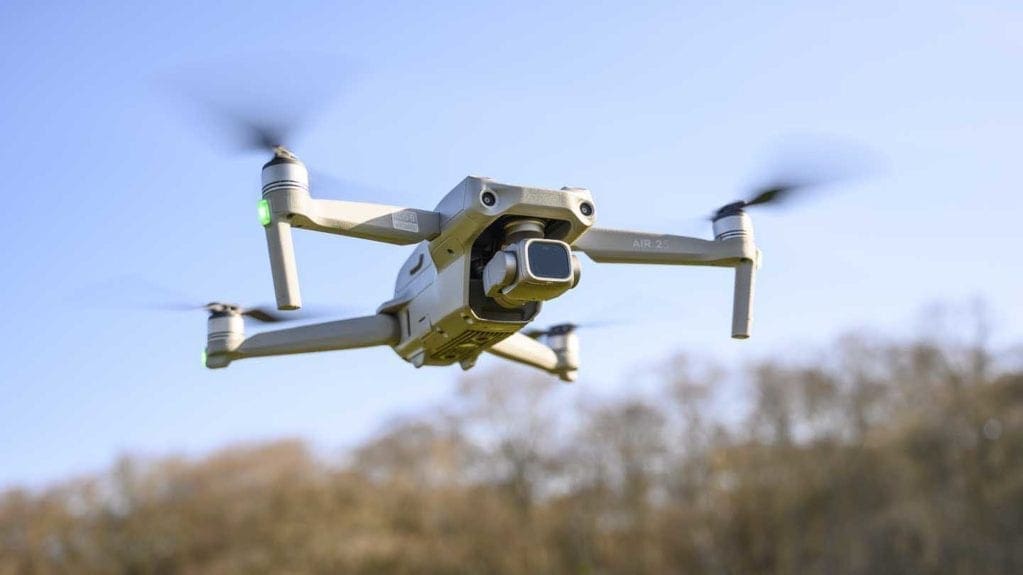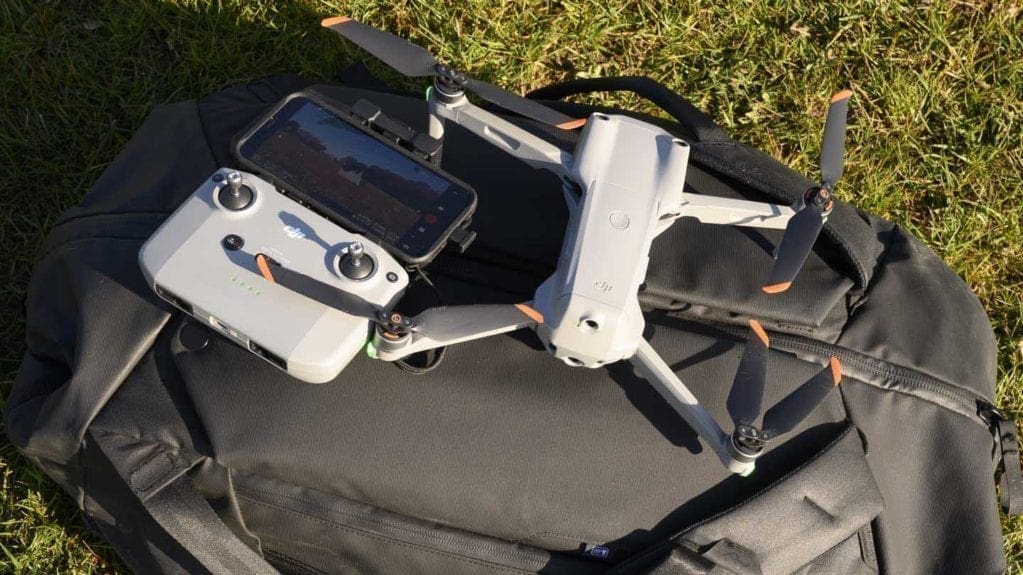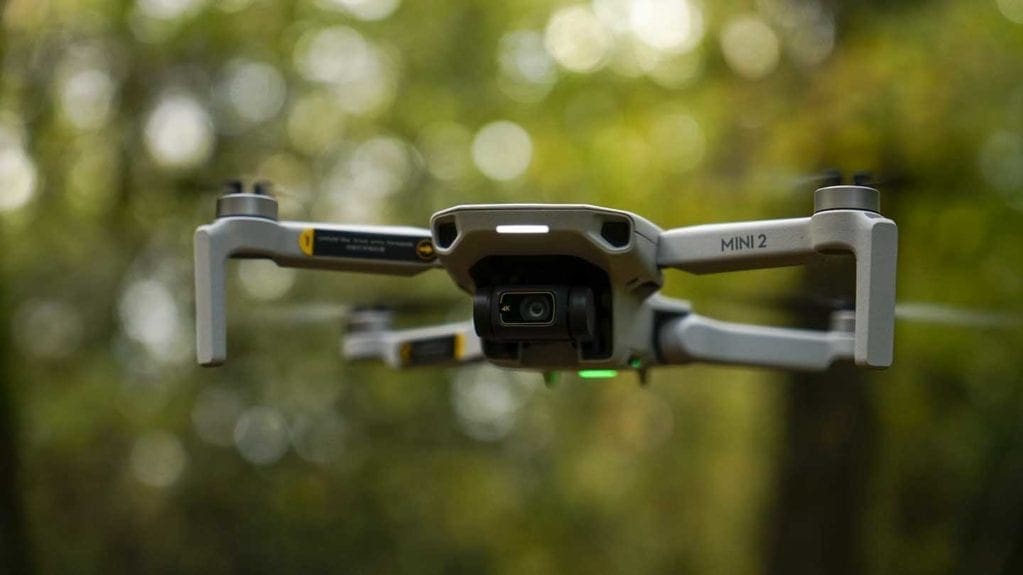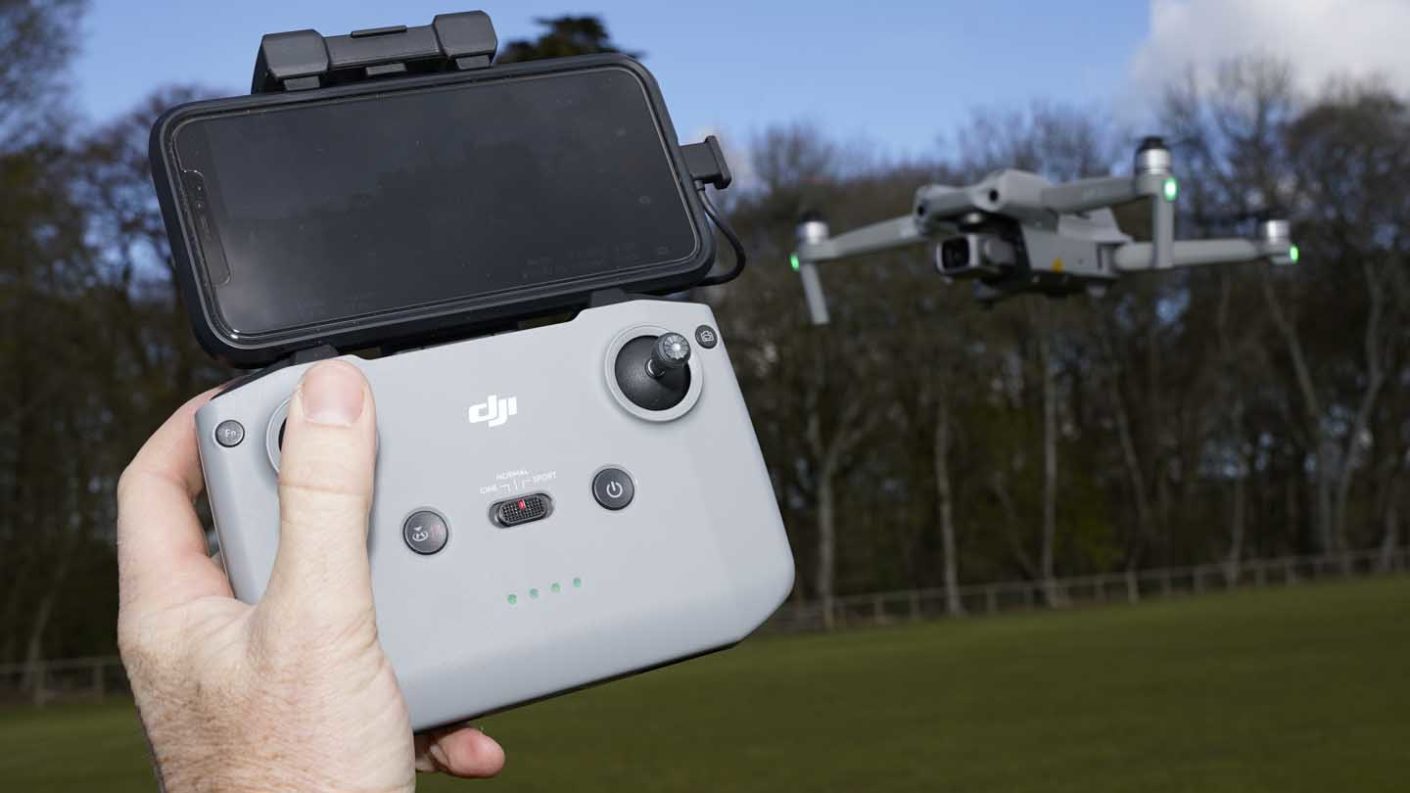At the end of 2020, the drone laws changed in the UK and Europe. Inevitably, this has caused some confusion about what is and isn’t allowed and whether you need a drone licence or not. That’s not helped by the fact that we’re still in the transition phase in which existing drones are allowed to be flown under revised restrictions, but these will change again on January 1st 2023.
However, there are some exciting new developments as a result of the new drone regulations, not least, the fact that if you have a drone that weighs less than 250g, for example, the DJI Mini 2, you can fly it just about anywhere you want, provided that you’re away from any flight restriction zones and you have permission to take off and land from the landowner.
Things get a little bit more complicated if your drone weighs more than 250g, but more about that later.

Commercial and recreational drone flights
Another good thing about the new regulations in the UK and Europe is that the concept of splitting drone flights into commercial and recreational flights has gone. In fact, with the right drone, you don’t actually need any qualification to fly commercially. Of course, that doesn’t mean that it’s not advisable to get a drone qualification.
Drone Registration
In the UK and Europe, if your drone has a camera or weighs more than 250g, and in the USA if it weighs over 250g /8.8oz, you need to register it with your country’s aviation authority. In the UK, that’s the Civil Aviation Authority (CAA) and in the USA it’s the Federal Aviation Administration (FAA). If you live in Europe, here’s a link to find your National Aviation Authority.
In the UK, you need to register your drone and obtain both an Operator ID and a Flyer ID.
For most people, the drone flyer and the operator, are the same person, but some organisations and companies may want to register as an operator and enable other people with a flyer ID to fly their drone(s). The operator is the person or organisation that is responsible for the drone while the flyer is the person who is responsible for flying it safely and legally.
It costs £9 a year to have an Operator ID. Registering as a drone operator creates an operator ID number that must be displayed on all of the operator’s drones.
A Flyer ID is free but you have to pass an online test before the ID is issued. The CAA provides some straightforward learning materials that give you all the information you need to pass the test, but if you fail, you can keep taking the test until you pass.
Follow the link to register as drone operator and obtain a flyer ID with the CAA.

Drone operation categories
The new drone regulations in the UK and Europe move away from the segregation of commercial and recreational flying and instead focus on a risk-based approach. The general premise is that big heavy drones pose more risk than small, light drones.
The regulations define three drone operation categories called Open, Specific and Certified.
There are also five different drone categories, C0 to C4. The drones are categorised according to their weight, speed, and design. However, there are currently no certified drones and, according to DJI, there isn’t actually an agreed process at the moment for categorising drones.
The Open Category
Of the three drone operation categories, the Open category is likely to be of most interest to photographers. It enables you to fly a drone of less than 25Kg at a maximum height 400 feet /120m, provided that it stays within visual line of sight.
The Open category is divided into three sub-categories, A1, A2 and A3. These are defined as follows:
A1 ‘fly over people’
This is for drones that weigh less than 250g. These drones pose low risk and can therefore be flown over people but not crowds. Also, you don’t need qualification (apart from passing the Flyer ID test) to fly this type of drone.
Existing drones (referred to as legacy drones) that weigh less than 500g, such as the original DJI Mavic Air (430g) can also be flown in this sub-category up until the first of January 2023. After that time they must be flown following the rules of the A3 sub-category.
A2 ‘fly close to people’
You need the A2 Certificate of Competence and a class C2 drone to fly in the A2 sub-category. It allows you to fly the drone as close as 30m horizontally from uninvolved people in normal circumstances, but this distance can be reduced to 5m in the drone’s, low-speed mode.
Up until January 2023 legacy drones that weigh less than 2Kg, such as the DJI Air 2S and DJI Mavic 2 Pro and Mavic 2 Zoom can be flown in the A2 category, provided that the pilot has the A2 Certificate of Competence and the drone is at least 50 metres away from uninvolved people. After January 2023, these drones must be flown in the A3 sub-category
A3 ‘far from people’
This sub-category is for drones that weigh up to 25Kg but they must be flown at least 150 metres from residential, commercial, industrial or recreational areas and 50 metres from uninvolved people.
After January, 2023, all legacy drones that weigh more than 250g must be flown following the rules of this category unless the pilot holds an Operational Authorisation from the National Aviation Authority (the CAA in the UK). You need to obtain General Visual Line of Sight Certificate by studying with a Recognised Assessment Authority to be able to apply for an Operational Authorisation.
Specific category
This drone operation category is for drones that weigh less than 25Kg but where the operations are considered more risky than those allowed by the Open category. To fly in this category you must hold a General Visual Line of Sight Certificate (GVC) and been issued with operational authorisation from the aviation authority (the CAA in the UK).
Certified category
This is for drone operations that pose the highest risk and it includes flying drones that weigh more than 25Kg

New drone qualifications and drone licences
The introduction of the new regulations in UK and Europe put an end to the Permission for Commercial Operations (PfCO). Instead, there are two qualifications over and above the compulsory Flyer ID test. These are the A2 Certificate of Competency (A2 CofC) and the General Visual Line of Sight Certificate (GVC) which leads to an operational authorisation. These are in effect what people refer to as a drone licence.
A2 Certificate of Competency (A2 CofC)
Provided that you’re flying a drone that weighs less than 25Kg at least 150m from residential, commercial, industrial or recreational areas and 50 metres from uninvolved people, you don’t actually need any qualification (or drone licence) to fly either recreationally or commercially. However, the A2 CofC makes it much easier to find acceptable flying locations because the only requirement (aside from avoiding flight restriction zones around airfields etc) is that you stay the correct distance from involved people. With a class C2 drone, that’s 30m in normal speed mode and 5m in low-speed mode. With a legacy aircraft you have to remain 50m from uninvolved people.
Obtaining an A2 Certificate of Competency (A2 CofC) is much easier than getting a GVC or the old PfCO. The first step is to register with a qualified training company, known as a Recognised Assessment Entity (RAE). As a result of the pandemic, most RAE’s now offer the training and subsequent multiple-choice theory test online. There’s no flight test for the A2 CofC but you have to self-certificate that you are capable of performing certain tasks such as checking your drone and flying specific manoeuvres.
As soon as your self-certification is accepted and you pass the test, the RAE will issue you the A2 Certificate of Competency. Job done.
General Visual Line of Sight Certificate (GVC)
Getting the General Visual Line of Sight Certificate (GVC) and the subsequent operational authorisation is a similar process to getting the now-defunct PfCO. As with the A2 CofC you have to register with an RAE for the theory course and multiple-choice test, but there’s also a flight test in which you have to demonstrate the ability to fly a few manoeuvres and that you understand the flight planning process.
You also need to produce an operations manual that documents all the procedures you follow. The RAE should help you with this and will usually check it before issuing a GVC that you submit to the aviation authority (CAA) along with your operations manual and the application for an Operational Authorisation (plus the required payment).
Recognised Assessment Entity (RAE) recommendation: UAVHUB
I trained for my PfCO, A2 CofC and GVC with UAVHUB and I’d recommend this RAE – I paid for all the training. The A2 CofC training usually retails for £139 and, as it’s all available online, it’s feasible to complete it in a day. The GVC course retails for £349 and all except the flight test can be completed online. There are also some special offers and bundle options available.

Drone classifications
The new drone classifications in the UK and Europe are summarised as follows:
Drone Class C0
- These drones can be flown in any subcategory
- They have a maximum take-off mass of less than 250g
- A maximum speed of 19m/s (approx. 42.5 mph)
- Unable to fly more than 120m (400ft) from the remote pilot
Drone Class C1
- These drones can be flown in any subcategory
- Less than 900g maximum take-off mass
- Less than 80 joules of energy transmittable if they collide with a human head
- A maximum speed of 19m/s (approx. 42.5 mph)
- Designed and constructed to minimise injury to people
Drone Class C2
- These drones can be flown in the A2 subcategory
- Less than 4kg maximum take-off mass
- Designed and constructed to minimise injury to people
- Has a ‘low-speed mode’ which limits the maximum speed to 3m/s (approx. 6.7 mph)
Drone Class C3
- These drones can be flown in the A3 subcategory
- Less than 25kg maximum take-off mass
- Maximum dimension 3m
- Unlimited speed
- Onboard height-limiting system
- Onboard lighting
- Geo-awareness system onboard
Drone Class C4
- These drones can be flown in the A3 subcategory
- Less than 25kg maximum take-off mass
- Unlimited speed
- No automation other than basic flight stabilisation
- Geo-awareness Geo-awareness system onboard
Legacy drones
As I mentioned earlier, the drone classification process still hasn’t been finalised in the UK and Europe which means that even drones like the DJI Mavic 3, DJI FPV and DJI Air 2S that were introduced after the regulations came in are uncategorised. That means these new drones are technically regarded as legacy drones.
A few months ago the CAA stated that there would be no retrospective categorisation of drones, however, in response to questions asked during an EASA (European Union Aviation Safety Agency) livestream, EASA responded ‘The market regulation in general does not allow to retrofit products already in the market. However the EU Commission recently finalised a procedure to allow the retrofit for drones. The procedure may only be activated by the drone manufacturer’ so perhaps the position might change – especially if the lack of a categorisation method goes on much longer.
Follow the link to read the EASA responses.
US drone laws
In the USA, the drone laws are a little more straightforward than in the UK and Europe, but there’s a distinction made between recreational and commercial drone flights.
All drones over 250g (8.8oz) need to be registered with the FAA, this costs just $5 for 3 years. If you plan to fly commercially, you also need to pass an online test with the FAA to obtain a Part 107 certificate.



